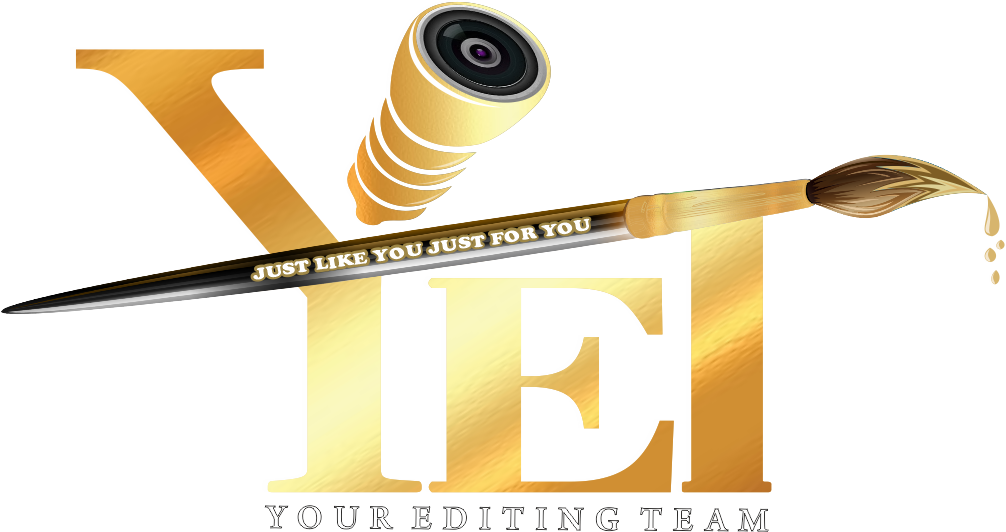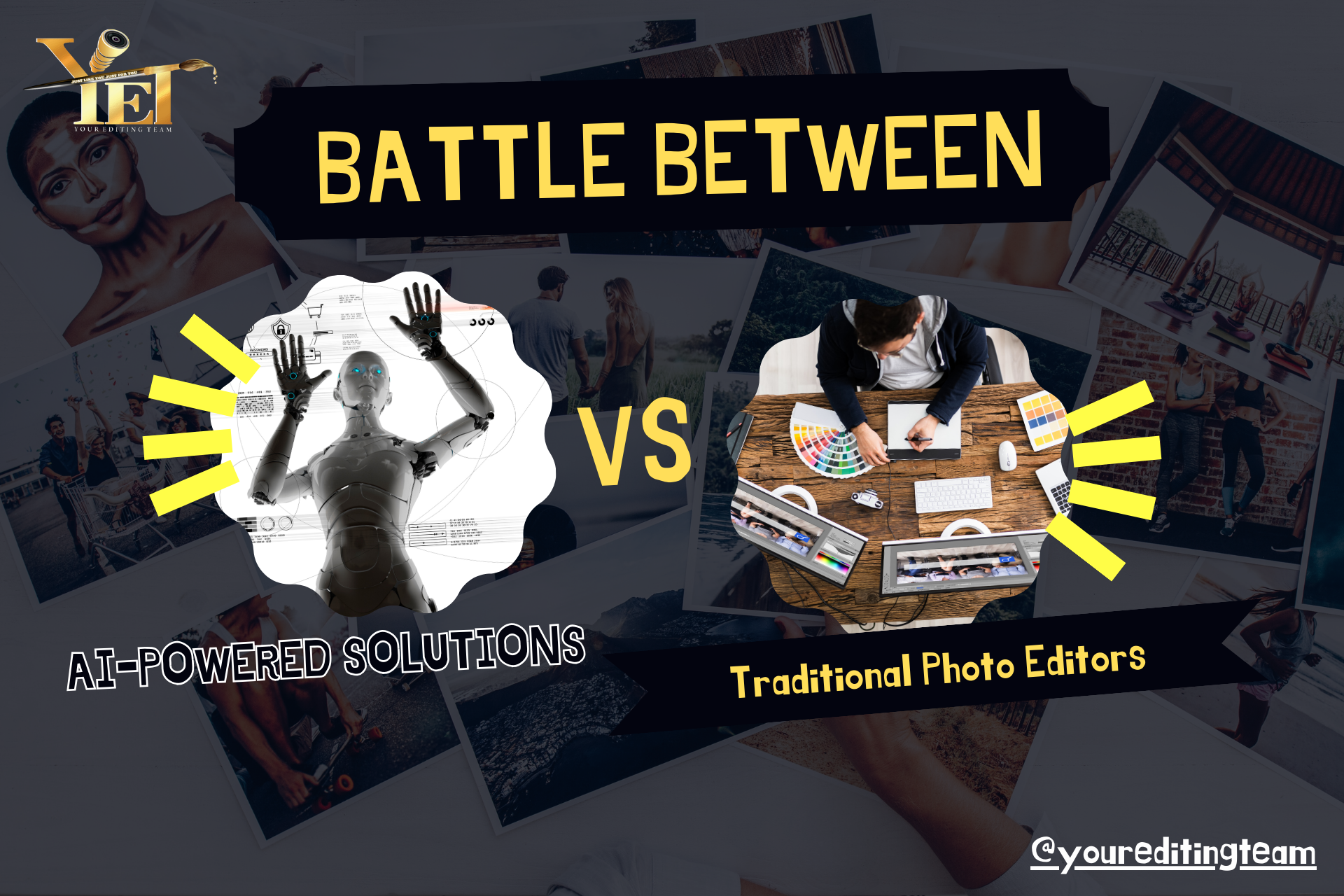Battle between Human v/s AI for photo fixer
In today’s digital age, images play a pivotal role in capturing attention and conveying messages effectively. Whether you’re a professional photographer, a social media influencer, or a blogger, the demand for visually stunning content is ever-present. When it comes to editing images, there are two primary options: traditional photo editors and AI-powered solutions.
In this blog, we’ll explore the differences between these two approaches and help you determine which one suits your editing needs best.
Traditional Photo Editors for preset photo editing:
Traditional photo editors like Adobe Photoshop, GIMP, and Affinity Photo have long been the cornerstone of digital image editing. These software tools offer a comprehensive array of features and functionalities, allowing users to manipulate every aspect of an image with precision and control. From basic tasks such as cropping and resizing to more advanced techniques like layering and masking, traditional photo editors provide a robust toolkit for creative expression.
Pros of professional photo editor:
1. Complete Control: Traditional photo editors empower users to fine-tune every detail of their images, resulting in highly customized and polished outcomes.
2. Extensive Features: With a wide range of tools and filters, traditional photo editors cater to diverse editing needs, from basic adjustments to intricate retouching.3. Professional Results: Experienced users can leverage the advanced capabilities of traditional photo editors to achieve professional-quality results that meet the highest standards.
Cons of high quality photo editor:
1. Steep Learning Curve: Mastering traditional photo editing software can be daunting for beginners, requiring time and dedication to acquire proficiency.
2. Time-Intensive: Achieving desired results may involve multiple steps and meticulous attention to detail, making the editing process time-consuming.
3. Cost: Some traditional photo editors come with a hefty price tag, which may be prohibitive for budget-conscious users. “Youreditingteam budget-friendly photo & video editing services are now available online every Friday. Don’t miss out on exclusive offers and updates – follow our official social media pages today!”

AI-Powered Solutions for photo edit file:
Artificial intelligence has revolutionized the way we approach image editing, introducing a new wave of tools that leverage machine learning algorithms to automate and enhance the editing process. AI-powered solutions like Adobe Sensei, Luminar AI, and Pixelmator Pro utilize advanced techniques such as image recognition, content-aware editing, and style transfer to streamline workflows and produce impressive results with minimal effort.
Pros of AI photo fixer:
1. Automation: AI-powered solutions automate repetitive tasks, such as background removal, object detection, and color correction, saving users time and effort.
2. Accessibility: With intuitive interfaces and automated features, AI-powered solutions are accessible to users of all skill levels, including beginners.
3. Innovation: AI algorithms continually evolve and improve, enabling innovative features like intelligent image enhancement, style transfer, and content generation.
Cons of AI photo touch up:
1. Limited Control: While AI-powered solutions offer convenience and automation, they may lack the granular control and customization options available in traditional photo editors.
2. Dependency on Algorithms: The effectiveness of AI-powered editing relies on the quality of underlying algorithms, which may vary across different software platforms.3. Privacy Concerns: Uploading images to AI-powered tools hosted on cloud servers may raise privacy and security concerns, particularly when handling sensitive or proprietary content.
When it comes to choosing between traditional best photo enhancer and AI-powered solutions, there is no one-size-fits-all answer. Both approaches offer unique advantages and limitations, catering to different user preferences, skill levels, and editing requirements. While traditional photo editors provide unparalleled control and flexibility, AI-powered solutions excel in automation and accessibility. Ultimately, the decision boils down to your individual needs and preferences. Whether you prioritize complete control over your edits or seek the convenience of AI-driven automation, there’s a tool out there to help you bring your creative vision to life.
Selecting the Ideal Photo Editor: Prioritizing Quality in a Photography Business
In the competitive world of photography business, the quality of images is paramount. From capturing memorable moments to delivering stunning visual narratives, professional photographers understand the significance of high-quality editing in their work. When it comes to selecting a photo editor, there’s often a dilemma: choosing between traditional software known for its quality and AI-powered solutions renowned for efficiency.
Here we explore why photography businesses may prioritize high-quality photo editors over AI-based ones and offer insights into making the right choice for your editing needs.
Quality and Precision:
One of the primary reasons photography businesses opt for traditional photo editors is the unparalleled level of quality and precision they offer. Programs like Adobe Photoshop and Lightroom are revered for their robust editing capabilities, allowing photographers to meticulously fine-tune every aspect of an image. From adjusting exposure and color balance to removing imperfections and enhancing details, traditional photo editors provide the tools necessary to achieve professional-grade results with precision and control.
Maintaining Creative Vision:
Photographers often have a distinct creative vision for their work, and traditional photo editors empower them to bring that vision to life with utmost fidelity. These software solutions offer a wide range of advanced features and customizable options, enabling photographers to express their artistic style and preferences seamlessly. Whether it’s creating dramatic landscapes, vibrant portraits, or compelling visual narratives, traditional photo editors ensure that photographers retain full control over the editing process, preserving the integrity of their creative vision.
Workflow Consistency and Integration:
Consistency is key in the photography business, and traditional photo editors are renowned for their stability and reliability. Professional photographers rely on these software tools for their robust performance and seamless integration with their existing workflows. Moreover, traditional photo editors often offer compatibility with industry-standard file formats and plugins, facilitating smooth collaboration with clients, printing labs, and other professionals in the field. This consistency and integration contribute to a streamlined editing process and enhanced productivity, essential factors for photography businesses striving for efficiency and excellence.
Customer Expectations and Reputation:
In the photography business, reputation is everything. Clients expect nothing but the best when it comes to the quality of images delivered to them. By utilizing high-quality photo editors, photography businesses can ensure that their output meets and exceeds client expectations, fostering trust, satisfaction, and loyalty. Moreover, the reputation of a photography business hinges on the caliber of its work, and investing in top-tier editing tools demonstrates a commitment to excellence and professionalism, further enhancing the business’s standing in the industry.
Prioritizing Quality in Photo Correction | A Cornerstone for Photography Businesses
While AI-powered photo editors offer undeniable advantages in terms of automation and efficiency, photography businesses often prioritize quality and precision in their editing processes. Traditional photo editors like Adobe Photoshop and Lightroom remain indispensable tools for professional photographers, providing unparalleled control, consistency, and integration with existing workflows.
By choosing high-quality photo editors over AI-based alternatives, photography businesses can uphold their creative vision, maintain workflow efficiency, meet client expectations, and safeguard their reputation in a competitive market. Ultimately, the decision should align with the unique needs, preferences, and goals of the photography business, ensuring that every image produced is a masterpiece of quality and craftsmanship.


